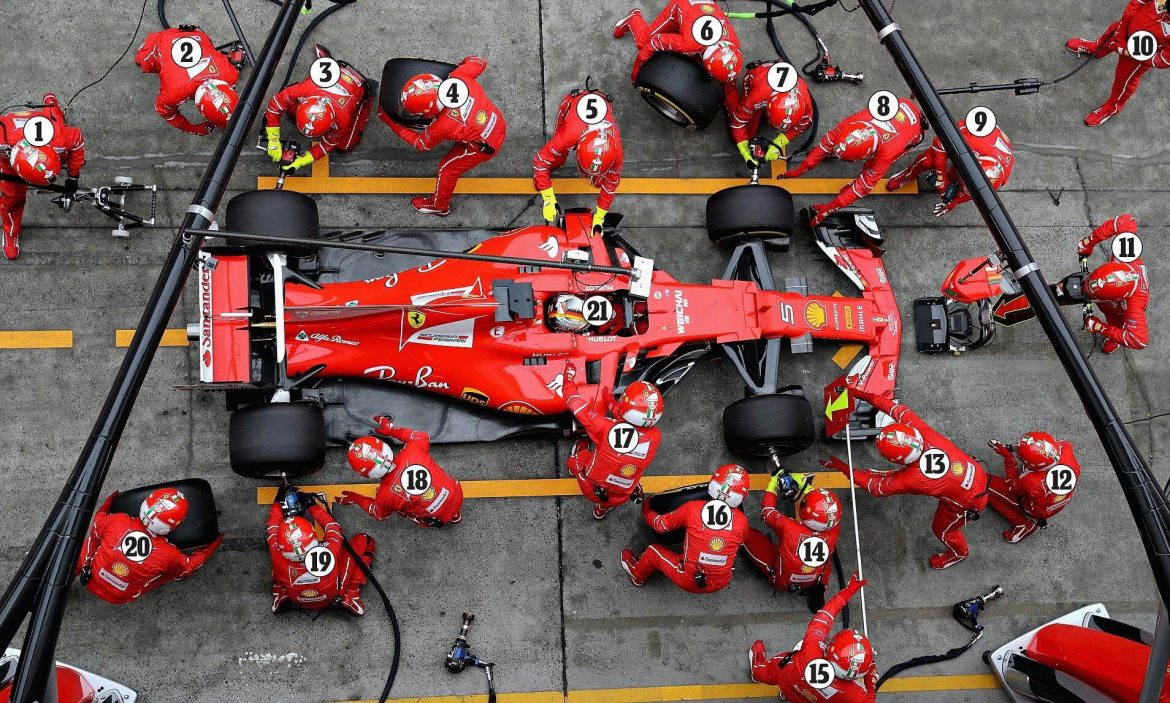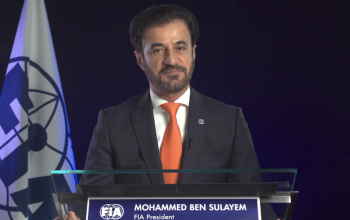Photo Credit: Getty Images
Diving into the rich history of the pit stop
Vincent Raitt, Contributor
In the inaugural 1950 Formula One season, pit crews often consisted of four people tasked with refueling the car, fixing mechanical issues, and replacing used tires. These “pit stops” took over a minute to complete. In 2023, a new record for the fastest pit stop was achieved by team McLaren: 1.8 seconds. What happened between 1950 and 2023 to cut pit stop time by 97 percent? The answer is changes in three areas: technology, safety regulations, and competitiveness.
Technological improvements are perhaps the most logical difference-maker. During the early days of the sport, the pit crew had to hit the old wheels with hammers to detach them for replacements. Nowadays, you will see teams using specialized “wheel guns” to unscrew the wheel nuts. Modern F1 cars are also far more advanced, meaning that most mechanical issues can be fixed (or at least mitigated) by changing settings on the car while it’s still driving around the track. This means the pit crew can focus solely on fixing the problems that can’t be fixed by computers, like used tires and broken wings.
Another change that has allowed pit stops to become blisteringly quick is increased safety regulations. One consequential regulation was the banning of refueling mid-race. This used to be a major time drain during pit stops, and teams were incentivized to find ways to inject fuel into the tanks as quickly as possible. Often these methods were very unsafe and led to massive pit-lane fires, as excess fuel would spray, and overheating brakes would light that fuel on fire. After refueling was banned, the most time-consuming task pit crews had to focus on was changing the wheels, a comparatively safe process. While there are regulations that purposely slow down pit stops, they are often quickly overcome. During the 2021 season, new regulations were added that purposely slowed pit stops by 0.2 seconds. At the time, this was considered the end of the sub-two second stop. As McLaren proved, teams have adapted to these changes and become even faster.
Perhaps the largest contributor to pit stop speed, however, is the increase in competitiveness. F1 teams are no longer boutique firms, but multibillion-dollar organizations with serious investors expecting results. As such, they can now hire much larger crews, and train them much more thoroughly. They used to have one person unscrew the wheel nut, take the used wheel off the car, put the new wheel on, and screw it back in. These tasks have now been split between three people, allowing the pit crew to complete them much faster.
In a sport where a tenth of a second can make the difference between winning and losing, it’s not surprising to see teams attempting to gain an advantage wherever possible. While much is said about changes made to F1 cars themselves, people often overlook the improvements made to pit stops that make them safer, more consistent, and much faster. It’s no coincidence that the teams with the best pit crews are often found at the head of the pack. In Formula One, every second is valuable.




